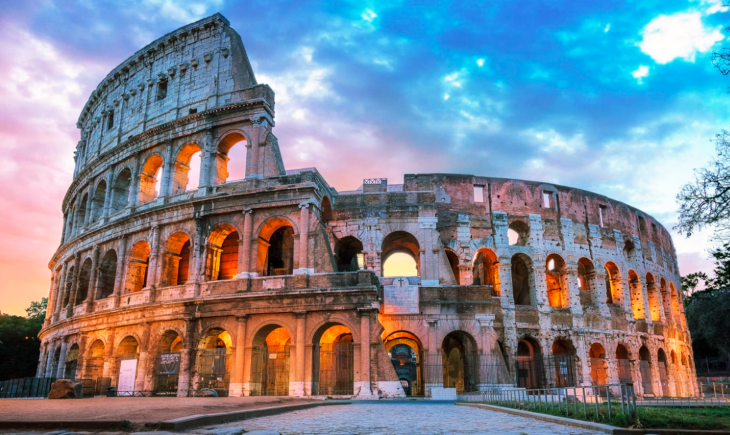Top 3 Fantastic Travel Attractions in Rome

Rome, the eternal city, is a must-visit destination for any tourist seeking a blend of rich history, breathtaking architecture, and delicious cuisine. With iconic sites such as the Colosseum, Roman Forum, and Trevi Fountain, visitors to Rome are transported back in time to the grandeur of the Roman Empire. The Vatican City, home to St. Peter’s Basilica and the Sistine Chapel, is a spiritual and artistic marvel that attracts millions of pilgrims and art enthusiasts each year. Additionally, Rome’s charming streets are lined with quaint cafes, gelaterias, and shops selling everything from handmade leather goods to traditional Roman pasta dishes.
Cathay Pacific provides a flight service from Tokyo To Rome making it convenient for travelers from around the world to explore this vibrant and historic city. Whether it’s admiring the stunning frescoes in the Vatican Museums, wandering through the ruins of the ancient city of Pompeii, or simply enjoying a leisurely stroll along the picturesque Tiber River, Rome offers endless opportunities for adventure and discovery. For those looking to unwind after a day of sightseeing, the city’s vibrant nightlife scene ensures that visitors can dance the night away in trendy clubs or sip cocktails in chic rooftop bars. With its perfect blend of old-world charm and modern amenities, Rome truly has something to offer every type of traveler.
Pantheon
The Pantheon is undeniably one of the most impressive architectural marvels in the world. Built in Rome nearly 2,000 years ago, this ancient temple-turned-church is a stunning example of Roman engineering and design. The building’s iconic domed roof, made entirely of concrete, is a true masterpiece of ancient construction. Standing at nearly 43 meters tall, it remains the world’s largest unreinforced concrete dome, a testament to the ingenuity of Roman architects.
Stepping inside the Pantheon is like stepping back in time. The interior is a breathtaking display of grandeur and beauty, with intricate marble floors, towering columns, and a sunken floor marked by ancient Roman symbols. The space is flooded with natural light streaming in through the oculus, a circular opening at the top of the dome. This celestial connection allows visitors to experience a unique play of light and shadow, enhancing the mystical atmosphere within the Pantheon.
The Pantheon’s rich history only adds to its allure. Originally built as a pagan temple dedicated to all the gods, it was converted into a Christian church in the 7th century. Despite its change in function, the Pantheon still maintains its original purpose as a place of worship and reflection. It serves as a powerful reminder of Rome’s ancient past and its enduring influence on Western culture.
Today, the Pantheon continues to draw visitors from around the world, eager to marvel at its timeless beauty and historical significance. Whether you’re an architecture enthusiast, a history buff, or simply looking to soak in the grandeur of the ancient world, a visit to the Pantheon is a must-do experience. With its awe-inspiring design, rich history, and spiritual ambiance, the Pantheon truly stands as a symbol of human achievement and a tribute to the enduring legacy of Rome.
Colosseum
The Colosseum, also known as the Flavian Amphitheatre, is an iconic symbol of ancient Rome and one of the most famous landmarks in the world. Built in the 1st century AD, this massive amphitheatre was used for various forms of entertainment, including gladiator fights, animal hunts, and even naval battles.
See also: The Power of Nomafoam Packing in Custom Packaging Solutions
One of the main highlights of the Colosseum is its sheer size and grandeur. With a capacity of up to 80,000 spectators, it was the largest amphitheatre ever built in the Roman Empire. The Colosseum’s elliptical shape and multi-tiered seating system allowed for efficient crowd control and easy access to all areas of the arena.
Another highlight of the Colosseum is its innovative construction techniques. The building’s exterior is made of travertine stone, while the interior is made of brick and concrete. The Colosseum’s ingenious design included a complex system of ramps, trapdoors, and elevators that allowed for quick and efficient movement of gladiators, animals, and scenery.
The Colosseum also has a fascinating history, with centuries of use and abuse. Despite being used for entertainment for over four centuries, the Colosseum fell into disrepair after the fall of the Roman Empire. It was eventually repurposed as a fortress, quarry, and even a church. Today, the Colosseum is a popular tourist attraction and a UNESCO World Heritage Site, drawing millions of visitors each year.
In conclusion, the Colosseum is a remarkable testament to the architectural and engineering prowess of ancient Rome. Its size, construction techniques, and historical significance make it a must-see attraction for anyone visiting the Eternal City. Whether you’re interested in history, architecture, or simply looking for a memorable experience, the Colosseum has something to offer for everyone.
Spanish Steps
The Spanish Steps in Rome, Italy, are one of the most iconic landmarks in the city and are a must-visit for tourists. This grand staircase, which consists of 138 steps in total, connects the Piazza di Spagna with the Trinita dei Monti church at the top. The Spanish Steps were built between 1723 and 1725 and were designed by the architect Francesco de Sanctis. The steps are known for their unique design, featuring a series of terraces, curves, and slopes that create a striking visual effect.
One of the main highlights of the Spanish Steps is the beautiful Barcaccia Fountain, which sits at the base of the staircase. This stunning fountain was designed by Pietro Bernini and his son, Gian Lorenzo Bernini, and is shaped like a boat floating in water. The Barcaccia Fountain is a popular spot for tourists to cool off in the summer months and is surrounded by charming cafés and shops where visitors can relax and soak in the atmosphere.
Another highlight of the Spanish Steps is the breathtaking view of Rome that can be seen from the top of the staircase. From this vantage point, visitors can take in panoramic views of the city, including the rooftops of Rome, the domes of the city’s churches, and the sprawling urban landscape. The view from the Spanish Steps is particularly stunning at sunset, when the golden light bathes the city in a warm glow.
In addition to its architectural beauty and panoramic views, the Spanish Steps are also a popular gathering place for locals and tourists alike. The steps are often crowded with people relaxing, socializing, and taking in the sights and sounds of the city. Whether you’re looking to explore Rome’s historic sites, enjoy a leisurely stroll, or simply soak in the atmosphere of this vibrant city, a visit to the Spanish Steps is sure to be a memorable experience.





